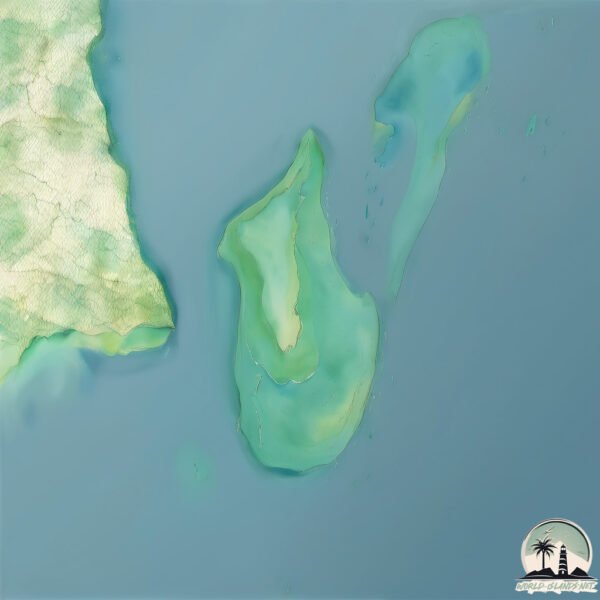Welcome to Yambe , a Tropical island in the Indian Ocean, part of the majestic Indian Ocean. This guide offers a comprehensive overview of what makes Yambe unique – from its geography and climate to its population, infrastructure, and beyond. Dive into the details:
Geography and size of Yambe
Size: 13.4 km²Coastline: 17.9 kmOcean: Indian OceanSea: Indian OceanContinent: Africa
Yambe is a Medium Island spanning 13 km² with a coastline of 18 km.
Archipel: –
Tectonic Plate: Africa – One of the world’s largest tectonic plates, covering the African continent and parts of the surrounding oceans, known for its stability with some active rift zones.
The geographic heart of the island is pinpointed at these coordinates:
Climate and weather of Yambe
Climate Zone: TropicalClimate Details: Tropical Savanna, WetTemperature: Hot
Climate Characteristics: Defined by distinct wet and dry seasons with high temperatures year-round. Pronounced rainfall occurs during the wet season, while the dry season is marked by drought.
Topography and nature of Yambe
Timezone: UTC+03:00Timezone places: Asia/RiyadhMax. Elevation: 7 m Mean Elevation: -23 mVegetation: Evergreen Broadleaf ForestTree Coverage: 73%
The mean elevation is -23 m. The highest elevation on the island reaches approximately 7 meters above sea level. The island is characterized by Plains: Flat, low-lying lands characterized by a maximum elevation of up to 200 meters. On islands, plains are typically coastal lowlands or central flat areas.
Dominating Vegetation: Evergreen Broadleaf Forest
Vegetation: 4 vegetation zones – Diverse Island
Infrastructure and Travelling to Yambe
Does the island have a public airport? no .
Does the island have a major port? no .
The mean population of Yambe is 1732 per km². Yambe is Densely Populated. The island belongs to United Republic of Tanzania .
Continuing your journey, Kisiwa Panza is the next notable island, situated merely km away.
Trip to Yambe Island| Tanga City| Tanga youtuber| Tanzanian youtuber
Yambe Island is located off the shore of Tanga city Tanzania . A 15 - 20 min boat ride.
Trip to Yambe Island| Tanga City| Tanga youtuber| Tanzanian youtuber
Yambe Island is located off the shore of Tanga city Tanzania . A 15 - ...
Yambe Island is located off the shore of Tanga city Tanzania . A 15 - 20 min boat ride.
Nabeel Mawji Snorkeling near Yambe Island in Tanga
Nabeel Mawji Snorkeling near Yambe Island in Tanga.
Nabeel Mawji Snorkeling near Yambe Island in Tanga.
SANDBANK IN YAMBE-ISLAND TANGA
A small unvegetated island surrounded by coral reefs located about 8km ...
A small unvegetated island surrounded by coral reefs located about 8km off Tanga Ciry shores For Booking and Enquiries ...
United Republic of Tanzania is classified as Least developed region: Countries that exhibit the lowest indicators of socioeconomic development, with the lowest Human Development Index ratings. The level of income is Low income.
News – Latest Updates and Headlines from Yambe
Stay informed with the most recent news and important headlines from Yambe. Here’s a roundup of the latest developments.
Loading...
Please note: The data used here has been primarily extracted from satellite readings. Deviations from exact values may occur, particularly regarding the height of elevations and population density. Land area and coastline measurements refer to average values at mean high tide.

